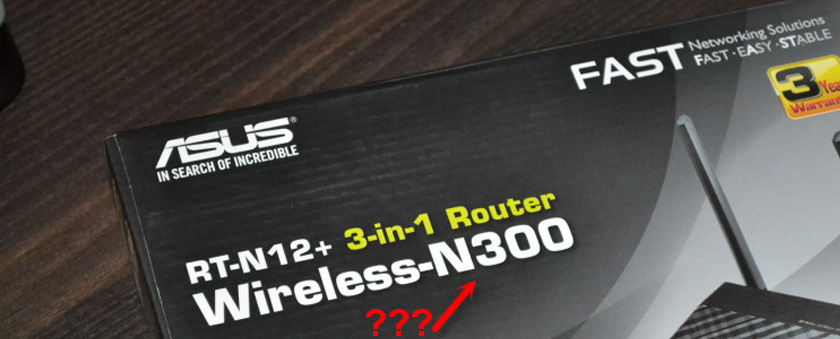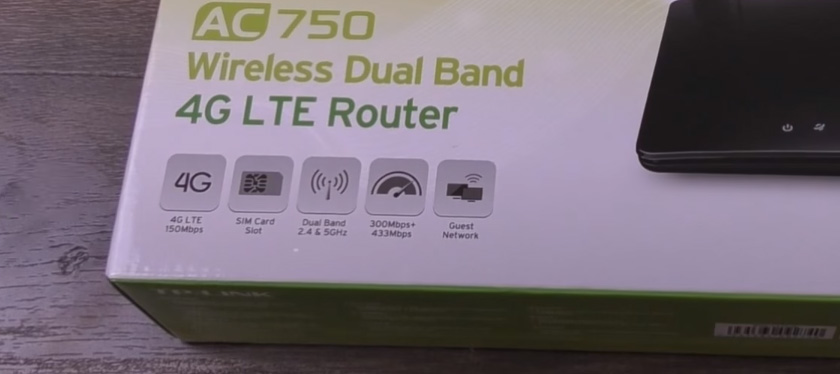A router that sides not the Speed by Wi-Fi and Gives 100 Mbps and More

I decided to write an article, and express my opinion and some observations about routers that do not cut the speed, and give a stable 100 Mbit/s on Wi-Fi network, or the speed that is stated in the tariff of the Internet provider. Very controversial, ambiguous and popular topic. After all, everyone who chooses a router, mostly looking for a model that does not cut the speed. Or that “breaks through walls”. But this is already from another opera 🙂 🙂
The backstory is very simple. Most likely you yourself, on your own experience have convinced and seen how routers cut the speed. Or somewhere on the Internet, perhaps in the reviews for a particular router you read a comment about how a certain “deceived” customer used the Internet at maximum (according to the provider’s tariff) speed, and then bought this damn router, configured it, and the connection speed fell several times. Maybe on the cable from the router it still gets almost maximum speed (for example, 100 Mbps), but on Wi-Fi complete horror. The speed has dropped to 50, 20, 10 Mbps or even less.

This is the kind of “problem” faced by almost everyone who connects their devices to the Internet via Wi-Fi network. Yes, the speed of connection via Wi-Fi router drops. How much – depends on many factors, which I will talk about in this article. The router is not always the only culprit. And most importantly, there is no router that would not cut the speed of wi-fi. Just some cut less, some cut more. Under different conditions and external factors.
Why did I write 100 Mbps in the title? Because it is the most popular tariff, which is most often connected in cities. Yes, there are times when the speed of the tariff is lower. In this case, you may not even notice a drop in speed after installing the router. For example, if you have a provider gives up to 20 Mbit/s. But there are tariffs with speeds up to 200 Mbps, 500 Mbps or even more. In this case, the loss in the speed of Internet connection after installing a router can be very large. Here, of course, much depends on the router you choose.
Why is the speed lower than what is stated on the box with the router and in the specifications?
Why? Why on the box with the router says N150, N300, N450, or even N600 and higher, and I have such a low speed of the Internet? About such a question very often suffer from the support staff of online stores, router manufacturers, or innocent consultants in stores 🙂 🙂 .
Now I will explain, and already close the topic with these numbers, which are indicated on the box, or in the characteristics of the router. Also many people see the item “Speed” in the properties of the connection on a computer, or mobile device, and do not understand why the data is so different.

Each router has a certain index of Wi-Fi network speed. This is one of the main indicators and criteria when choosing a router. If we consider routers that work only in the range of 2.4 GHz, then there the speed from 150 Mbit / s, and kind of up to 600 Mbit / s (4 antennas). If we consider dual-band routers, with support for 5 GHz, then there the speed will be higher.
So, all these figures, up to 150Mbps, up to 300Mbps, this is the maximum, theoretically possible speed of the wireless network, which can give this router in ideal conditions and only in theory. In some article I already wrote that these numbers have nothing to do with the real speed, as it depends on many factors.
To give you an example: an 802.11n router that can deliver speeds of up to 300 Mbps (they are the most popular on the market now) in theory, in reality can squeeze out a maximum of 100 Mbps. But even this is practically impossible. I’m not talking about budget models with N150 index. There is a maximum of 50 Mbit/s.
It turns out that if you have a tariff of 100 Mbps, and you bought a router with a speed of up to 150 Mbps, the maximum you can get on wi-fi is 50 Mbps.
The speed also depends on the device you connect to the Wi-Fi router. From the signal strength of the wireless network, from interference, and to some extent from the settings of the wireless network.
What causes speed drops through a Wi-Fi router?
Now about the most important thing. Why directly the speed is the same as stated by the provider, the cable from the router is the same, or a little lower, but on Wi-Fi speed drops. Sometimes even very much.
Everything is clear here without complicated investigations. A cable is a cable. Through it our Internet strictly along the designated route “flies” to the devices, and not sprayed across the room, apartment, etc., as in the case of wi-fi.
Let’s understand in more detail, and consider the main factors that cause the speed of wireless connection to sag.
- Let me tell you a little secret. A router is like a small computer. It has a main board, processor, RAM, permanent memory, wireless module. As with a computer, the performance of a router depends on the amount of memory, the performance of the processor, and the quality of these elements. The more memory, the more powerful the processor and wireless module, the faster the router can process data. And from this directly depends on the speed of the Internet and stability of work even under load. It is not uncommon that the speed seems to be good, but as soon as there is a load on the router, it immediately sags. All this is due to weak and not very high quality hardware, which is most often installed in budget models.
- If our computer runs on Windows, then the router also runs on its operating system. Simply put – firmware. And a lot depends on the firmware. If the software part is made badly, even powerful hardware will not save. And if the firmware with a lot of bugs, raw and unfinished, then because of this can also suffer connection speed. Always update the firmware on your router. This does not always have a positive effect, but it happens that the router starts working better and faster. You need to update the firmware!
- Every ISP uses a certain type of Internet connection. If you have configured your router yourself, you probably know what I mean. So, Dynamic IP (DHCP) and Static IP are the simplest and easiest protocols. With them the router will cut the speed the least. If the connection is PPPoE, it’s more complicated, the router will spend its resources for connection via this protocol and the speed will drop. And in case of PPPTP – the speed will drop even more.

So it is better to choose a provider that gives addresses automatically, or requires you to write them manually, but without authorization by username and password. - wi-fi client. Simply put, the device that you connect to the router. For example, when you measure the speed from your laptop (via wi-fi), it may be 15 Mbps, but from your phone it may be 70 Mbps. Or vice versa. Why so? It’s very simple, the speed is limited by the slowest device in the network. And if the router gives even 100 Mbps, and the module in a laptop or other device is limited to 24 Mbps (this is the maximum real speed for 802.11g), this is the speed we will get. Outdated Wi-Fi module, lack of support for new standards and technologies, outdated software (drivers) – all this directly affects the speed of connection to the Internet. And the router, as you understand, has nothing to do with it.
- Other external factors. For example, the worse the signal strength on your device, the slower the connection can be. Each Wi-Fi network operates in a certain range and on a certain channel. And when there are a lot of these networks around, they start to overlap and interfere with each other. I would add to this the interference from different appliances, obstacles in the form of metal in the walls, etc.
- Router settings. From the factory, by default, the router is configured to maximize compatibility with various devices. Including with older ones that you may not have. For example, the network mode is set to auto mode (b/g/n). And the channel width is 20/40 MHz. But, if you don’t have old devices that support only g wireless network mode, then it makes sense to set the router to n mode (only n) and the channel width to 40 MHz.
 Probably, the speed of Wi-Fi network will increase a lot. All these settings can be changed in the web-interface of the router, in the section with wireless network settings. I wrote about it in the article how to increase the speed of the Internet on wi-fi through the router.
Probably, the speed of Wi-Fi network will increase a lot. All these settings can be changed in the web-interface of the router, in the section with wireless network settings. I wrote about it in the article how to increase the speed of the Internet on wi-fi through the router.
With the reasons are sorted out, it would seem that I have not missed anything.
What router is needed to get the maximum speed on wi-fi network?
To get the maximum speed over wi-fi, we need a modern, powerful (and therefore not the cheapest) router. A new device (laptop, PC with Wi-Fi adapter, phone, tablet, TV) with a modern Wi-Fi module. And preferably a provider with a connection protocol Static IP, or Dynamic IP.
If we are talking about modern, wireless networking equipment, then of course, there must be support for the 5 GHz range and 802.11ac standard. This support should be both in the router and in the device that we connect to the Wi-Fi network. That is, the router must be dual-band. You can read more in this article.

Not only is 802.11ac Wi-Fi network speed much higher (maximum, theoretically possible up to 6.77 Gbps) compared to the most popular now 802 . 11n, but also in the range of 5 GHz (and 802.11ac works only in this range) practically no interference.
Pay attention to the speed of WAN and LAN ports of the router. In choosing a router that will cut the speed as little as possible, we forget that the speed is also limited by the WAN port to which we connect the Internet. And if we have a tariff speed of 200 Mbit/s, and we put a router, which WAN and LAN ports can work at a speed of 10/100 Mbit/s, it is clear that more than 100 Mbit/s we will not get either by cable or wi-fi.
If you have fast Internet, more than 100 Mbps, then you need a router only with gigabit ports. This is always stated in the specifications. Even mid-range routers don’t always have gigabit (1000 Mbps) ports. Be careful.
Routers with 802.11ac support are now quite affordable. There are so many models on the market. The only downside is that Wi-Fi network coverage in the 5 GHz band is slightly less than in the 2.4 GHz band. This is really true, I have already made sure of it. Not critical, but the signal is weaker.
A few important points:
- Dual-band routers give out two Wi-Fi networks. At 5 GHz and 2.4 GHz. So those devices that do not support the new standard will connect in the 2.4 GHz band. You can disable unnecessary network if needed.
- If you want to squeeze the maximum speed through a Wi-FI router, then do not buy budget models. The more expensive the router, the better the hardware in it is installed. And that means more performance and speed.
- Don’t forget about limitations on WAN and LAN ports.
- To maximize speed, update your router’s firmware and experiment with wi-fi settings. Mode of operation, channel, channel width.
- Do not forget that the speed of Wi-Fi connection also directly depends on the quality, performance and characteristics of the Wi-Fi module of the device on which we measure the speed. You can take measurements on different devices, and you will see that the speed is likely to be different.
More tips on choosing a router you can find in the article what Wi-Fi router is better to buy for home or apartment.
Conclusions
Any router will cut the speed on the Wi-Fi network. The only question is how much. And how much the speed will drop, depends primarily on the power of the router, support for new standards, from the parameters of the Wi-Fi receiver in the device, from the provider (type of connection and speed by tariff), interference, signal strength, etc.
If you are just choosing a router, I definitely advise you to buy a dual-band one. With support for the new 802.11ac standard. And preferably with gigabit ports. Most likely your new mobile devices already support 802.11ac. If everything works well, you can buy ac-enabled USB adapters for PCs and even laptops. I would also advise you not to skimp on the router. It is better to take a good, modern and powerful model, which will be relevant for many years, than to change the router in a year, and all this year spit on the low speed.
It is clear that everything here is individual, and a lot depends on the tasks with which the router should cope. But in this article we are talking about choosing a router that can provide maximum performance and minimum loss in speed.
You can leave questions in the comments, and share your thoughts on this subject. Also write what router you have, what tariff, and what speed on wi-fi. Maybe you somehow managed to speed up your wi-fi and want to share useful advice.
Only one request, do not ask me what model to buy. It’s up to you to choose. And how to choose, I wrote above.

 IS it Possible to Install A 5 GHZ MODULE, 802.11AC Institute of the Old One in the Wi-Fi Laptop?
IS it Possible to Install A 5 GHZ MODULE, 802.11AC Institute of the Old One in the Wi-Fi Laptop?  What to look for when when a laptop?
What to look for when when a laptop?  How to Choose a Wi-Fi Adapter for PC (Stationary Computer)
How to Choose a Wi-Fi Adapter for PC (Stationary Computer)  Standard HomePlug AV and PowerLine Adaplers: What is it and How It Works?
Standard HomePlug AV and PowerLine Adaplers: What is it and How It Works?